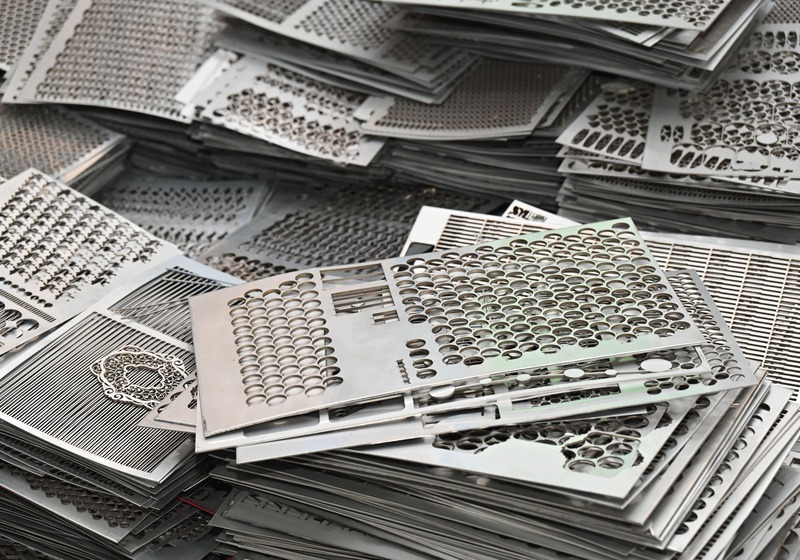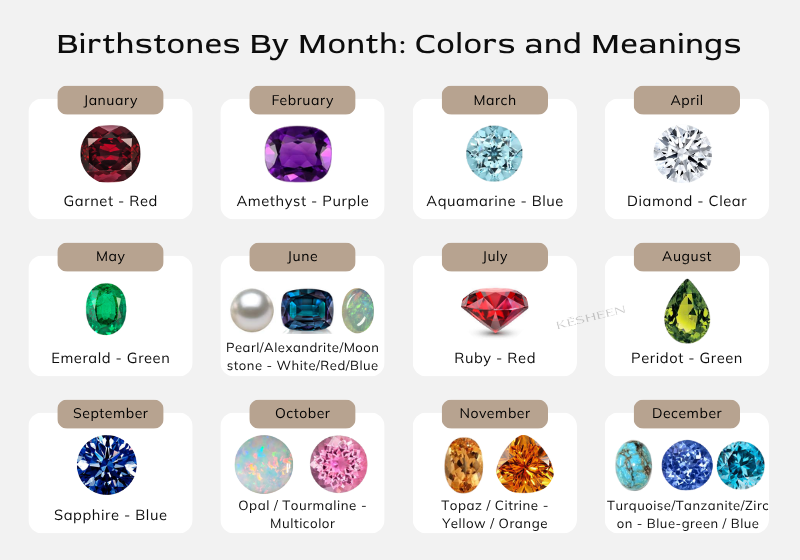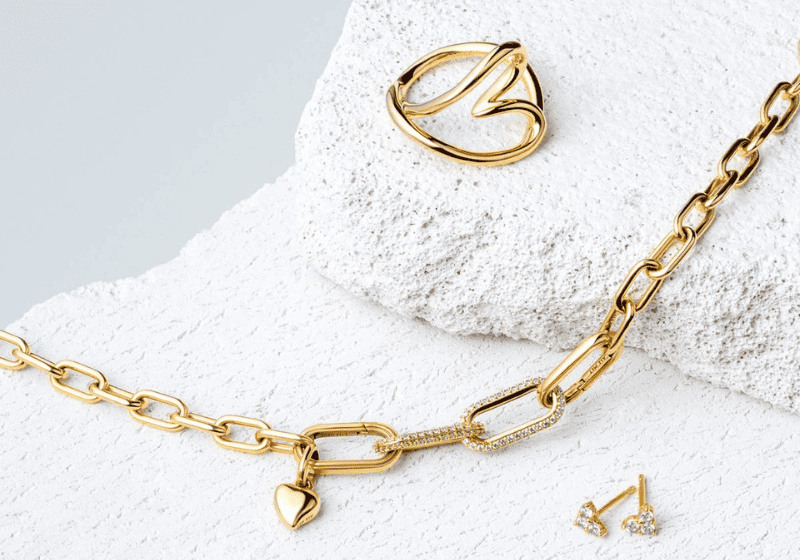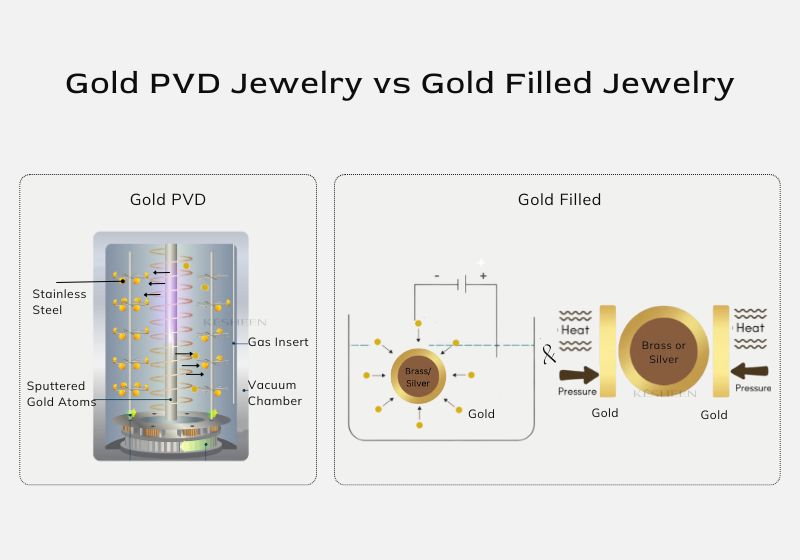Sustainable jewelry from recycled materials is more than just repackaging and selling used jewelry pieces. It’s a growing trend towards sustainability and efforts to curb the negative effects of the jewelry industry on the planet.
In this post, we will discuss everything you need to know about jewelry recycled materials, showcase Kesheen practices and efforts in sustainability, and how your brand can adopt the sustainability practices.
What Are Recycled Materials in Jewelry?
These are metals that were formerly used in other jewelry but have now undergone a recycling process to be reconfigured into new jewelry.
Key Features & Benefits
- Already Recycled and Processed: They are transformed through a specialized jewelry recycling process to be ready for immediate use in manufacturing new jewelry pieces.
- Environmentally Responsible: Recycled metals are better for the environment. They eliminate the need to mine new raw materials, so there’s no environmental impact.
- Same Quality as Newly Mined Metals: Jewelry recycled materials does not mean lower quality. They are usually as durable and beautiful as new materials.
- Lower Carbon Footprint: Boasts of energy-efficient production methods. It uses significantly less energy since there’s no need to mine raw materials.
Is Recycled Jewelry Cheaper?
Not always the case. Recycled jewelry are often valued at the same price as newly-produced pieces. Recycled jewelry takes extra time and effort to rework the materials into the desired shape.

What Are Recyclable Materials in Jewelry?
These are materials designed and selected for their ability to be processed and reused at the end of the jewelry’s lifecycle. Recyclable jewelry can be broken down and reformed into new pieces, supporting sustainable production.
Key Features & Benefits
- May Not Yet be Recycled: They are usually new materials chosen specifically for their recyclable potential. These materials are designed for future reuse.
- Circular Economy Potential: Enables continuous lifecycle loops where the materials are used multiple times, reducing waste and maximizing resource efficiency.
- Support Take-Back or Recycling Programs: Facilitates brand loyalty from eco-conscious customers. They return old pieces for responsible recycling and environmental stewardship.
Difference Between Recycled and Recyclable Materials
The major difference between these two sustainable jewelry materials lies in their timing and current state.
Recycled materials have already been used to make jewelry and are repurposed for making another piece. They offer instant sustainability advantages.
Recyclable materials, on the other hand, offer future sustainability potential. They are raw materials chosen specifically for their ability to be reused when the jewelry reaches its lifecycle.
What Metals Can be Recycled in Jewelry?

Here are the common recycled metal jewelry, including their value of recyclability and how often they can be recycled:
- Precious Metals: These include gold, palladium, and silver. They have high value of recyclability and can be often recycled.
- Other Metals: These include brass and stainless steel. Brass offers medium value when recycled and you would have to separate the copper and zinc components. Is stainless steel recyclable? Yes, stainless steel jewelry is 100% recyclable but its value varies, ranging from low to high.
- Natural Stones: These include diamond, sapphire, ruby, and emerald. They boast of high recyclability value and retain their value after several recycling.
- Man-made Materials: These include cubic zirconia and moissanite. They offer low to medium recyclability value, thus they are not often recycled.
| Category | Material | Value of Recyclability | Key Considerations |
| Precious Metals | Gold | High | 24K gold is easiest to recycle; alloys need refining |
| Palladium | High | Extracted from electronic waste and reused in jewelry | |
| Silver | High | 999 silver is preferred; sterling silver often recycled after refining | |
| Other Metals | Brass | Medium | Recycling involves separating copper and zinc; large-scale recycling is less common, but small and medium volumes of brass are recycled within some jewelry factories |
| Stainless Steel | Low to High | Can be 100% recyclable; stainless steel is less recycled within jewelry factories, often largely recycled through organized systems | |
| Natural Stones | Diamond | High | Resets and resells well; retains value over time |
| Sapphire, Ruby, Emerald | High | Commonly reset in new jewelry designs | |
| Man-Made Materials | Cubic Zirconia | Low | Low value; often discarded instead of recycled |
| Moissanite | Medium | Reused in design, but less recycled on an industrial scale |
Best Practice of Recycling Stainless Steel
Want to know how to recycle steel effectively? These are the best practices to use:
- Recycle Small Batches of Scrap Only for Internal Factory Use
Recyclable stainless steel materials take longer time to process and can be less-efficient when recycled in large volume. It is better to recycle stainless steel scraps in small batches for internal factory use, this will be more efficient.
- Pre-Sort and Clean Scrap Materials
Separate stainless steel from other metals, coatings, and other components at the source. Stainless steel are tough metals and take longer time to process, thus they should not be combined with other metals and components to avoid interference. This will make the recycling process faster and lower the energy use.
- Redirect Scrap to High-Consumption Industries
Is recycled stainless steel safe? Yes, it is. If there is large volume of stainless steel scrap or recyclable materials, redirect them to high-consumption industries like automotive, construction, energy, or appliance sector can be a better choice. They often need large quantities of stainless steel and have the capacity to process them quicker.

How to Recycle Stainless Steel Jewelry?
Here are the step-by-step process of recycled stainless steel jewelry:
Step 1: Collecting
Start by gathering the metal scraps from consumers and factories. Also, collect old or unused stainless steel jewelry.
Step 2: Sorting
Go through the collected metals carefully to separate stainless steel from other materials and components. Proper sorting ensures a cleaner and more efficient recycling process.
Step 3: Melting & Refining
The sorted stainless steel is then melted down at high temperatures in a furnace. During this stage, impurities are removed, and the metal is refined to restore its original quality and strength.
Step 4: Recreating
The refined stainless steel is used to make new stainless steel jewelry. It can be transformed into a PVD coating jewelry to enhance the beauty, durability, and sustainability.

Sustainable Practices at Kesheen Factory
As a professional custom stainless steel jewelry manufacturer, Kesheen prioritizes sustainable practices in all of its manufacturing processes, starting from raw materials sourcing to production, packaging, and shipping.
Ethical Sourcing and High Utilizing Materials
At Kesheen, we have a traceability and transparency system to monitor our raw materials supply chain. Every material (metals and gemstones) are used efficiently, with a 90% utilization rate. The metals and gemstones are cut based on the required design and the leftover materials are used in smaller jewelry pieces to avoid waste.
Sustainable Production Process
We have several sustainable production methods in place to regulate our manufacturing processes, such as low-emission production, eco-friendly PVD coating, and water & waste management. Our mission is to contribute positively to the environment by not causing pollution or destroying the planet.
Recycling In-House Production Waste
After production, we actively recycle in-house production waste by collecting and reprocessing leftover materials. They are melted and refined to be used for other purposes. This not only reduces our environmental footprint but also ensures efficient resource use.
Multiple Ways to Prolong Product Life Cycle
To extend products’ life cycle, we apply various coating elements like rhodium or PVD to make the jewelry tougher and last longer. And when the jewelry finally gets to the end of its life cycle, we recycle them in-house for another purpose. For cheap and time-consuming metals, we sell to other industries.
Responsible Disposal of Non-Recyclable Jewelry Waste
Scrap materials that can’t be reused in our factory are sold at a low cost to our certified recycling partners.
- Peals can be ground into powder and repurposed into shell pearls.
- Metals can be redirected to sectors like electronics or construction, where they continue their life cycle with minimal waste.
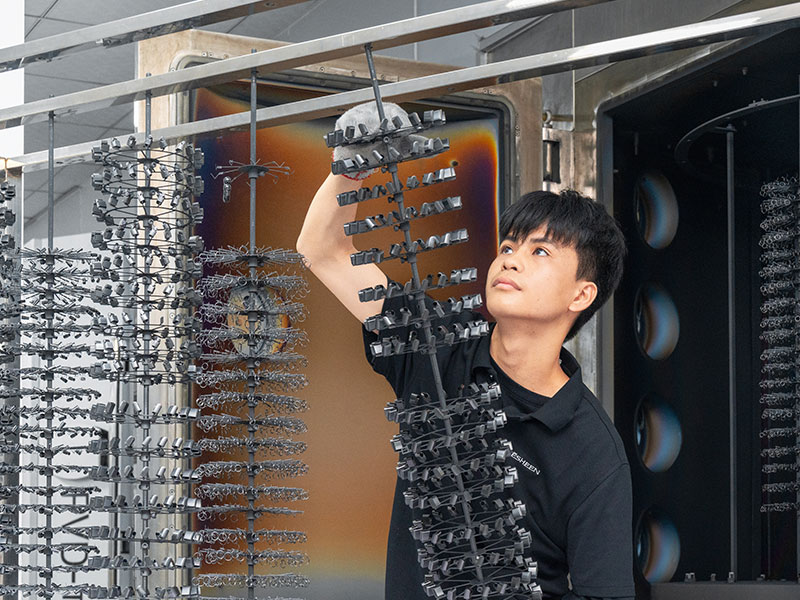
How Jewelry Brands Can Adopt Sustainable Practices?
The jewelry industry is at a pivotal moment where sustainable jewelry is gaining popularity. Forward-thinking brands are discovering that sustainable practices not only reduce environmental impact but also create stronger customer relationships and long-term business value.
Here are 4 simple ways for jewelry brands to join this movement:
Use Recycled & Recyclable Materials
Start by transitioning to recycled and recyclable materials like 100% recyclable stainless steel, lab-grown stones, and gems. Jewelry from recycled materials lasts longer and can be repurposed for other purposes, allowing customers to get maximum value for their money even when the jewelry lifecycle comes to an end. This can increase your number of customers and skyrocket your revenue.
Offering Repair Services at Stores
Establish comprehensive repair services at your stores to strengthen customer relationships. Be a one-stop shop where customers can come to buy jewelry of their choice and also get repair services for damaged jewelry. Also, offer cleaning, polishing, and maintenance services to keep their pieces looking new.
Adopting a Take-Back Program
Have a structured system that allows customers to bring old jewelry for recycling. You can offer them trade-in credits towards new purchases, thereby preventing irresponsible disposal and waste in the environment. For proper recycling of old and scrap jewelry, you can send them to us at Kesheen.
Choosing Sustainable Packaging & Shipping
Sustainability practices are not limited to raw materials acquisition and production, it extends to packaging and shipping. Ensure your packaging and shipping medium are not wasteful or detrimental to the environment. For example, replace traditional jewelry boxes with recycled cardboard, bamboo, or biodegradable materials. Eliminate plastic components in favor of paper-based protective materials and natural fiber pouches.
Conclusion: Shaping a Greener Future for Jewelry Together
The future of jewelry lies not just in precious materials and skilled craftsmanship, but in our collective commitment to preserving the planet that provides these treasures. A greener future can only be achieved by partnering together to encourage the use of jewelry from recycled materials and eliminating irresponsible jewelry disposal.
